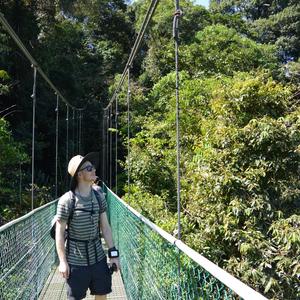Sometimes the biggest surprises come in the smallest packages. The tiny Kingdom of Bhutan in South Asia, located between Tibet and India, is a treasure trove of vibrancy, not just due to its majestic landscapes and culture, but also the sheer wonderment you'll find within every passing season.
If you are wondering when to visit Bhutan or if you are consulting your calendar for the best time to visit Bhutan throughout the year, as well as a few other essential must-see sights while you're there, including spotting the majestic black-necked crane, and give you some insight into the weather, we'll be covering it all in this blog.
Undoubtedly the best time to visit is between October and December when the air is clear and fresh with sunny skies. You will be able to see the black-necked crane birds that make their annual winter visit from the Tibetan Plateau to the Phobjikha Valley in Bhutan. Visiting at this time of year means you've bypassed the rainy season that typically begins in July and extends until September. But if you're looking to experience the culture of Bhutan up close and personal, visiting during February and March means you will experience the Punakha and Talo festivals. We'll touch upon it all, so let's dive in and find the ideal time to visit Bhutan.
Spring: March to May
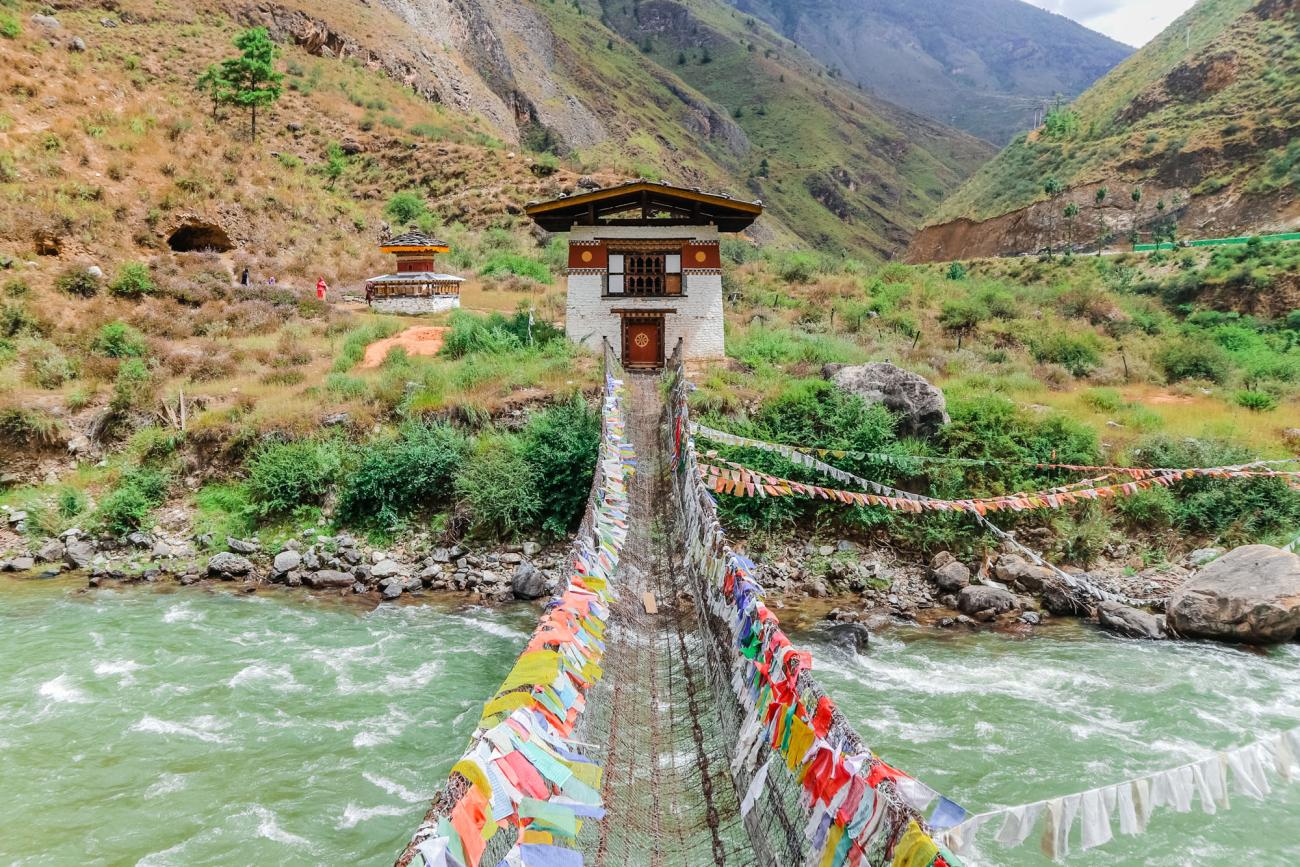
Springtime in Bhutan is the perfect time to visit. The country experiences beautiful wildflowers blooming, and as the skies are clear with minimal rainfall, you can see stunning views of the Himalayas at high altitudes. March and April is an ideal time for outdoor activities like hiking and cycling, with temperatures average around 14.5°C to 22.8°C in March and from 17.6°C to 26.2°C in April.
It is during this time the Talo festival is held. The Talo Tshechu Festival is a vibrant celebration that takes place once a year for three days, marking the birth of the second Buddha, Guru Rinpoche. It takes place at the Talo Monastery and is known for its colourful and exciting masked dances, as well as the Bhutanese clowns known as the Atsaras. The festival offers an opportunity to experience the rich culture and tradition of Bhutan, holding deep religious and historical significance. This is the perfect opportunity for villagers and families to come together and celebrate, taking part in community-based events like with the masked dancers. It is also the perfect opportunity for tourists to experience other wonderful cultural events like this.
The month of May brings increasing humidity and a higher chance of rain, while still offering suitable conditions for trekking. However, you may benefit from a few waterproofs in your luggage!
Summer: June to August
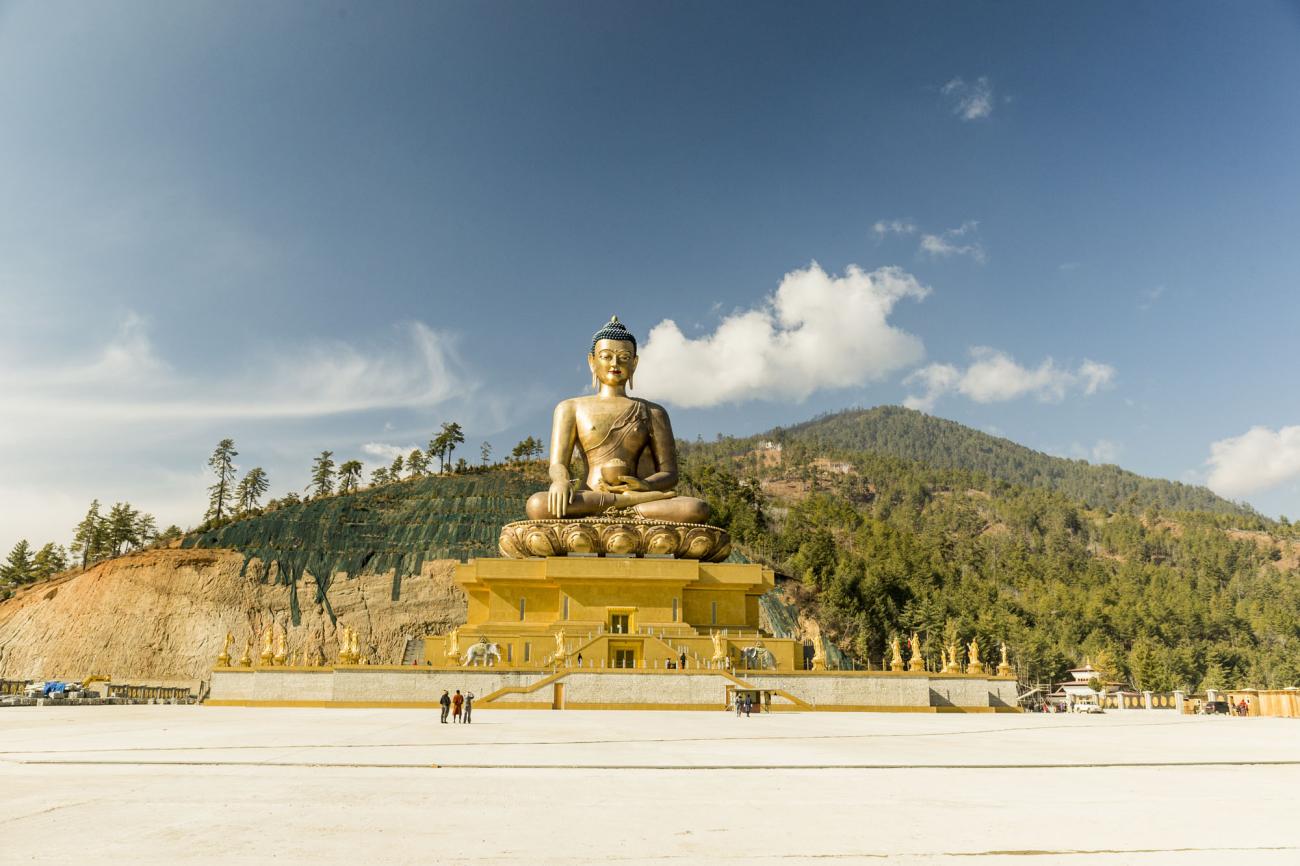
The summer months can deter some travellers due to it being the monsoon season. Characterised by increased heat, humidity, and heavy rainfall, the monsoon season in Bhutan typically arrives in late June. During this time, the monsoon brings substantial rainfall, especially in Southern Bhutan, with the potential for flash floods that can impact rural communities, road travel, and domestic flights.
June to August is some of the most perilous months to visit Bhutan, with July being the warmest month, with temperatures in the east reaching up to 31.5°C. Even for seasoned travellers used to adverse weather conditions, trekking is not suggested during this time; however, it is possible to go sightseeing. Monsoons can be dangerous for a number of reasons, including heavy rains causing flooding and landslides. However, the mornings following nighttime downpours can provide amazing views and also bring lush greenery to the country. Despite June to August not being ideal times to travel, it can be a less crowded time to visit. If you decide to go, it is essential to be prepared for the heavy rainfall and its potential impacts on travel and outdoor activities. Despite the weather conditions, there are several events and festivals taking place in Bhutan, including:
- Sakteng Festival - a colourful festival in the Sakten Valley that features traditional dancing performances. It is held between the 12th and 16th of June.
- Haa Summer Festival - typically held in July in the high alpine Haa Valley, is a celebration of Bhutanese culture, cuisine, and nomadic lifestyles, including local dance performances.
While many people may avoid Bhutan during the months of July and August, there are many benefits to be had from visiting during this time of year, just as long as you are careful.
Autumn: September to November
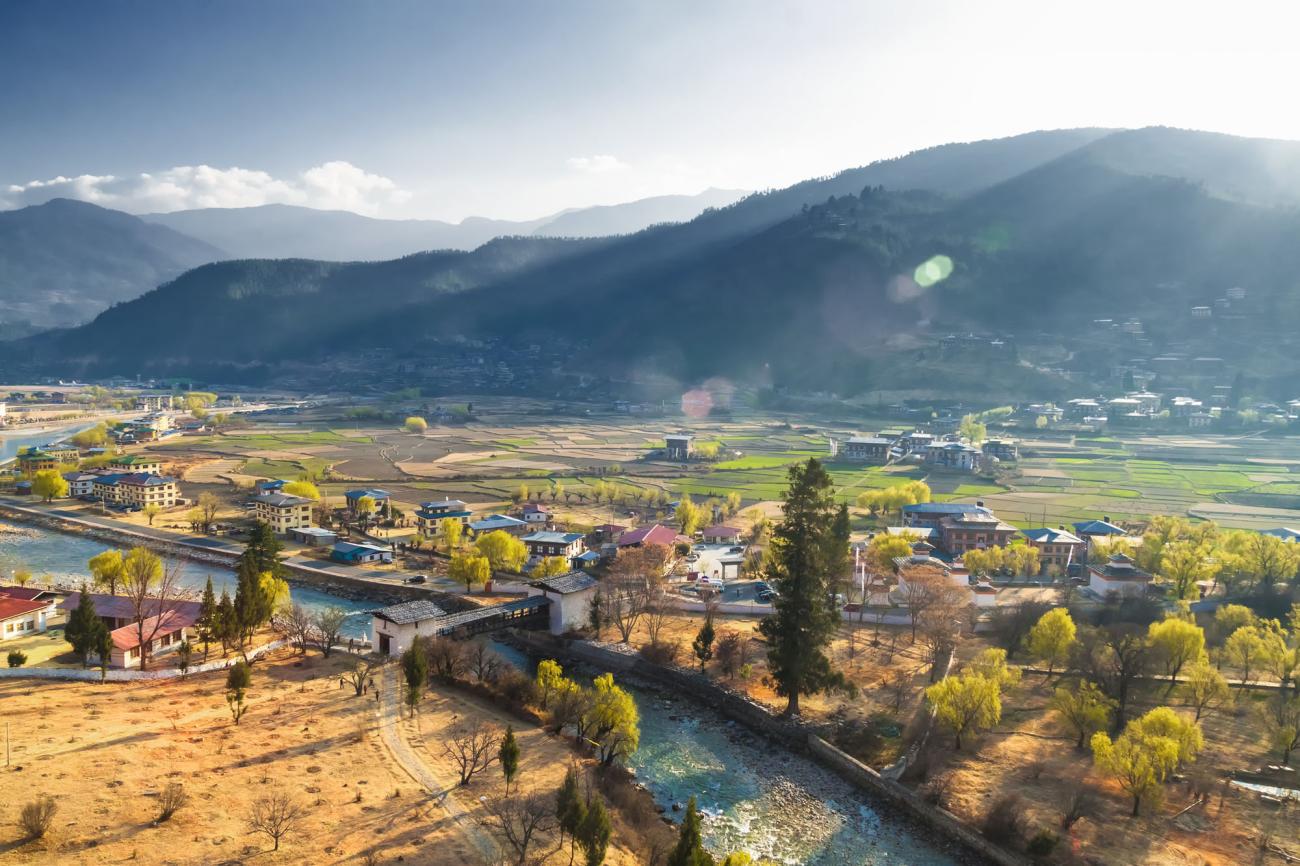
The month of September to November in Bhutan is one of the most popular times to visit. With September marking the end of the monsoon season, there is a decrease in rainfall and mild temperatures. Average temperatures during the daytime can average around 23°C, while in the Punakha Valley, it can be closer to 30°C.
It’s easy to see why 80% of international visitors travel to Bhutan in the month of October alone; Bhutan's weather is pleasant, and the conditions are ideal for exploring hiking and trekking. The major tourist areas such as Thimphu, Paro, and Punakha are particularly beautiful during this time as the temperatures are generally warm enough for outdoor activities, the air is fresh and clear, and you can see the stunning natural beauty of Bhutan in all of its glory.
It is during this time that some of the greatest festivals are held in Bhutan, including the Thimphu Tshechu festival. A three-day event held in the capital city of Thimphu. This is one of the most vibrant religious festivals, typically held in late September or early October. Located in the courtyard of Tashichhodzong, this is celebrated on the 10th day of the eighth month of the Bhutanese lunar calendar. Some of the key features include:
- Masked dances performed by monks and laymen, known as cham.
- Religious rituals and ceremonial processions,
- A time for community bonding where people from all walks of life come together to celebrate dressed in their finest traditional attire to receive blessings, wash away their sins, and socialise.
It is a perfect opportunity for tourists to witness the traditions and spirituality of Bhutanese culture in its most vibrant form.
The month of November celebrates one of the most wonderful festivals in the Bhutanese calendar. The Black-Necked Crane Festival is held on the premises of the Gangteng Monastery on 11th November to welcome the cranes who start arriving in late October. The black-necked crane is revered as a heavenly bird and a symbol of all prosperity and good fortune, also known as Thrung Thrung. The black-necked Crane is celebrated with major enthusiasm with the festival featuring several different events and features, including:
- Cultural performances, including traditional Bhutanese dances and songs.
- Educational performances that convey messages about protecting wildlife.
- Art exhibitions that highlight the beauty of the black-necked crane and the biodiversity of the Phobjikha Valley.
- Masked dances (Cham), a traditional part of all Bhutanese festivals, often depict stories relating to the black-necked cranes.
- Conservation talks covering various aspects of the crane's behaviour, habitat, and challenges faced.
- Crane watching, allowing participants to witness the birds make their seasonal migration to the Phobjikha Valley.
Winter: December to February
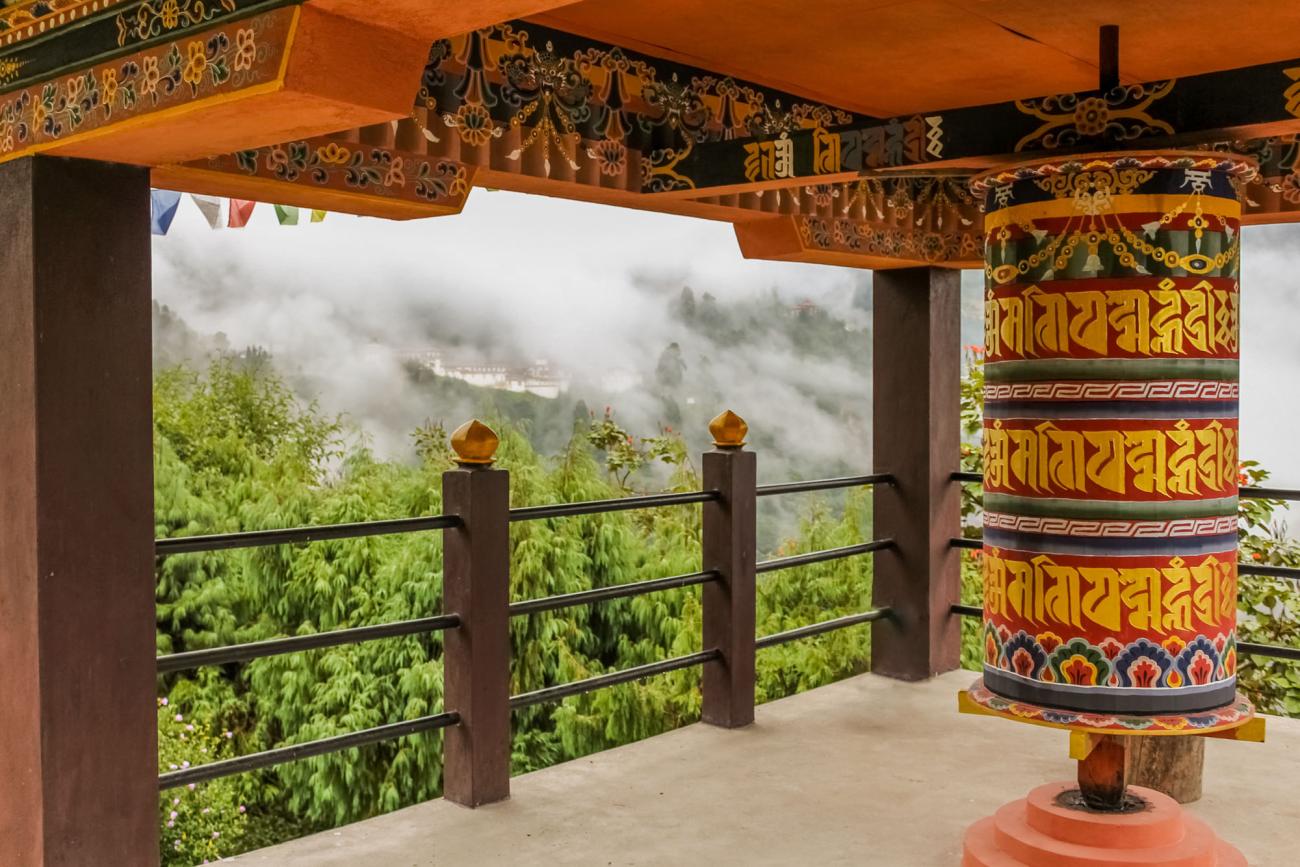
The winter months in Bhutan are characteristically cold, especially in the mountains, with nighttime temperatures falling as low as -1°C in tourist-friendly Western destinations like Paro and Thimphu.
Despite cold temperatures, there is plenty of sudden light, and in the valleys, it tends to be warmer. December to February for travellers can be a tough time due to colder temperatures, but Bhutan also has a number of wonderful festivals, including the Punakha Festival, held in mid-February to commemorate the victory of Bhutan over Tibetan forces.
Also known as Punakha Drubchen and Punakha Tshechu, the Punakha festival is held every year in the Punakha Dzong, which is one of Bhutan's most iconic fortresses. In addition to traditional Bhutanese celebrations, including music, dance, and songs, one of the key aspects of this festival is the unveiling of a large religious painting known as the Thongdrel on the last day of celebrations, depicting Buddha Guru Rinpoche. There is also a dramatic reenactment of the ancient battle theme, providing a glimpse into Bhutanese tradition, culture, and its rich history.
Other festivals held in Bhutan during winter also include:
- Domkhar Tshechu - held in December in the village of Domkhar in its monastery, and like many other Bhutanese events, it features traditional masked dances, rituals, and cultural performances.
- Between February and March, the Bhutanese New Year (known as Losar) takes place, which is marked by family gatherings, ritual feasting, and offerings of thanksgiving. This festival represents the chance for the Bhutanese people to begin preparations for the afterlife for the elderly.
Whether you are looking for spirituality and culture, natural beauty and adventure, or unique experiences, Bhutan provides so much for travellers looking for the very best Bhutanese experience. Bhutan is not just an appealing place because of its natural beauty but is an amazing place to go to avoid traditional touristy destinations. Bhutan has a "high value, low volume" tourism policy, which has been in place since 1974, designed to promote the rich culture of Bhutan while keeping the carbon footprint low, making it a perfect destination for mindful travellers who share Bhutan's values.
Whether you are a history buff, a lover of culture, or want to open your eyes to spiritual possibilities, Bhutan is a country that will envelop you in all of the right ways.
